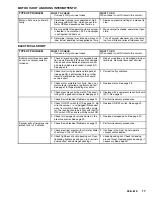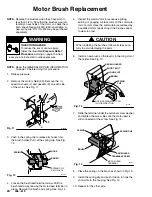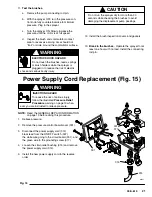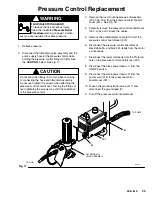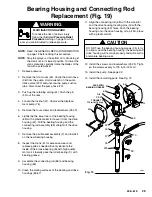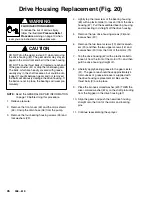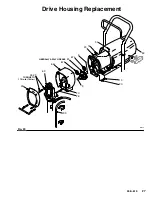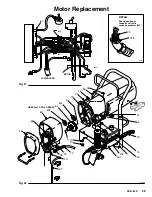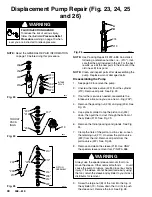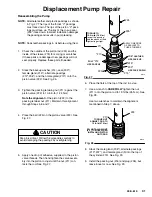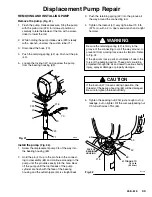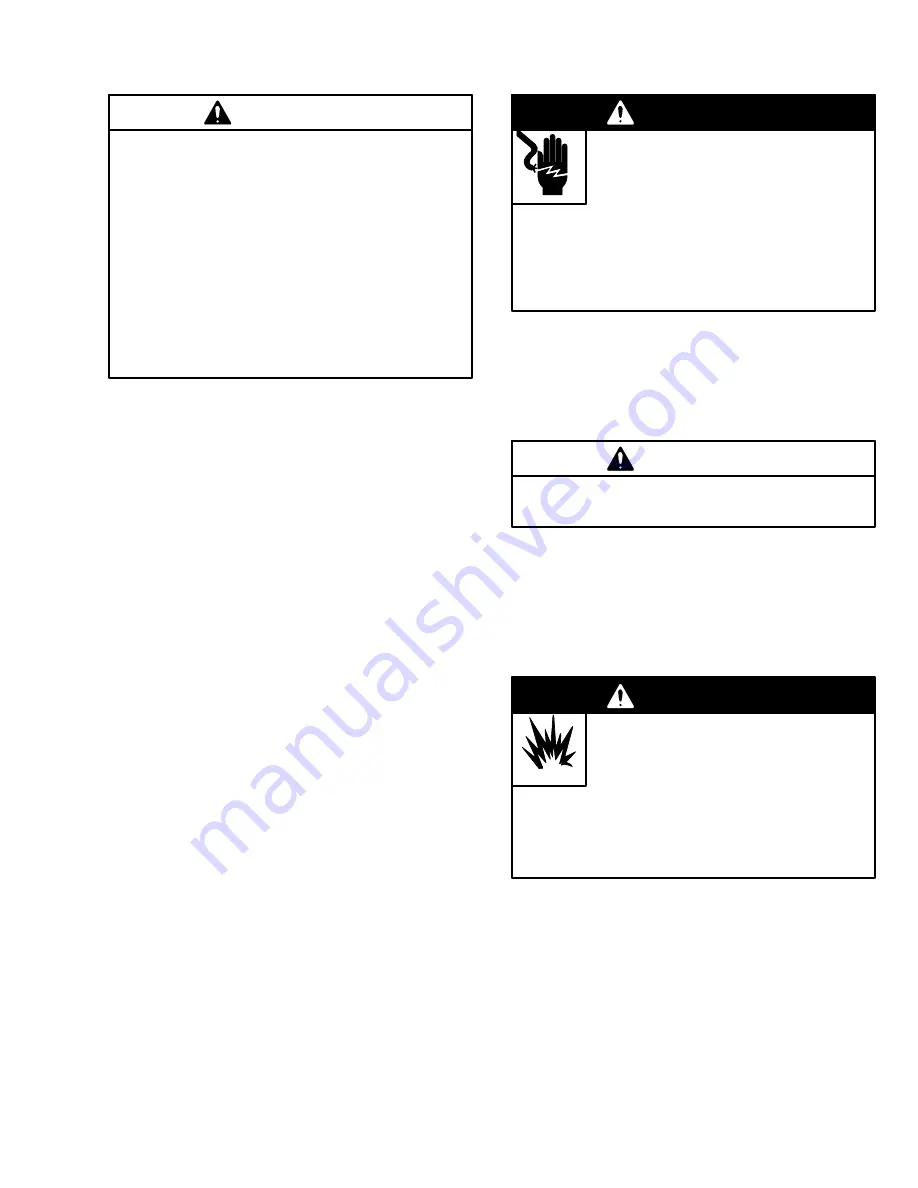
General Repair Information
To reduce the risk of a pressure control malfunction:
Always use needle nose pliers to disconnect a
wire. Never pull on the wire, pull on the connec-
tor.
Mate wire connectors properly. Be sure the flat
blade of the insulated male connector is centered
in the wrap-around blade of the female connec-
tor.
Route wires carefully to avoid interference with
the other connections of the pressure control. Be
sure the wires are not pinched between the cover
and the control box.
CAUTION
Phillips screwdriver
Small flat blade
screwdriver
Needle nose pliers
Plastic mallet
Adjustable wrench
Adjustable, open-end
wrench
Torque wrench
1/4 in. hex key wrench
3/16 in. hex key wrench
5/8 in. socket wrench
3/8 in. open end wrench
1/2 in. open end wrench
3/4 in. open end wrench
7/8 in. open end wrench
High quality motor oil
Bearing grease
Tool List
1.
Keep all screws, nuts, washers, gaskets, and
electrical fittings
removed during repair proce-
dures. These parts are not normally provided with
replacement assemblies.
2.
Test your repair before regular operation
of the
sprayer to be sure the problem is corrected.
WARNING
To reduce the risk of serious injury, in-
cluding electric shock, DO NOT touch
any moving parts or electrical parts with
your fingers or a tool while inspecting the repair.
Shut off the sprayer and unplug it as soon as you
complete the inspection. Reinstall all covers, gas-
kets, screws and washers before operating the
sprayer.
ELECTRIC SHOCK HAZARD
3.
If the sprayer does not operate properly
, review
the repair procedure again to verify that everything
was done correctly. If necessary, see the
Troubleshooting Guide, pages 13 – 17, to help
identify other possible problems and solutions.
CAUTION
Do not run the sprayer dry for more than 30 sec-
onds to avoid damaging the pump packings.
4.
Reinstall the motor shield before regular op-
eration
of the sprayer and replace it if it is dam-
aged. The cover directs cooling air around the
motor to help prevent overheating. It can also help
reduce the risk of burns, fire or explosion; see the
WARNING,
below.
WARNING
FIRE AND EXPLOSION HAZARD
During operation, the motor and drive
housing become very hot and could
burn your skin if touched. Flammable
materials spilled on the hot, bare motor could
cause a fire or explosion. Always have the motor
shield in place during regular operation to reduce
the risk of burns, fire or explosion.













